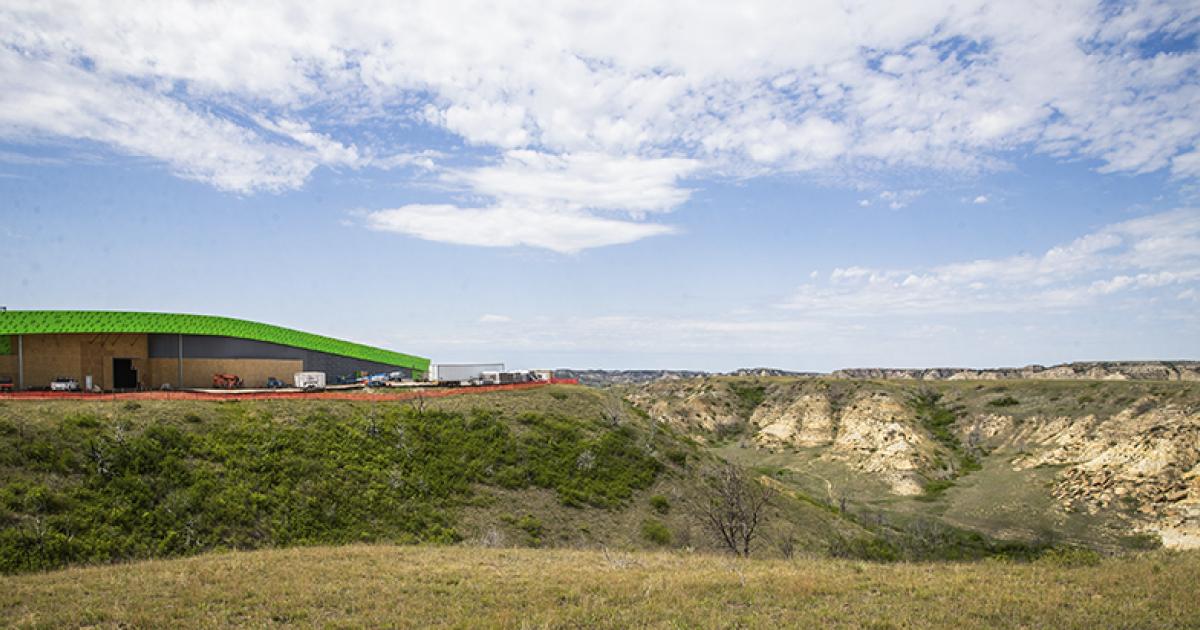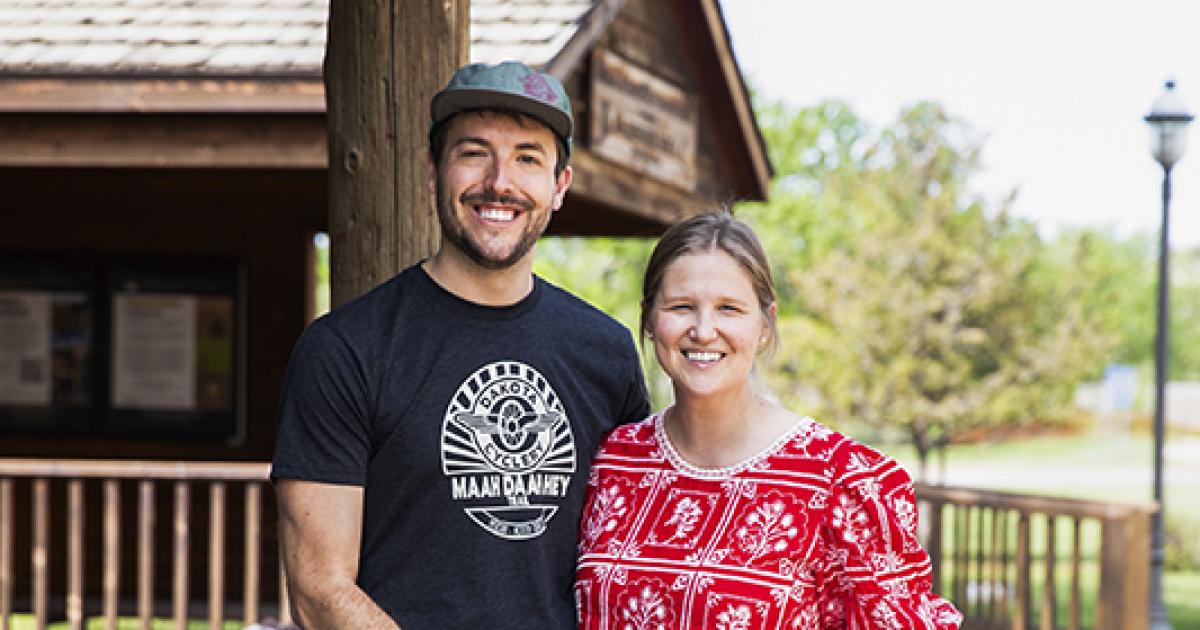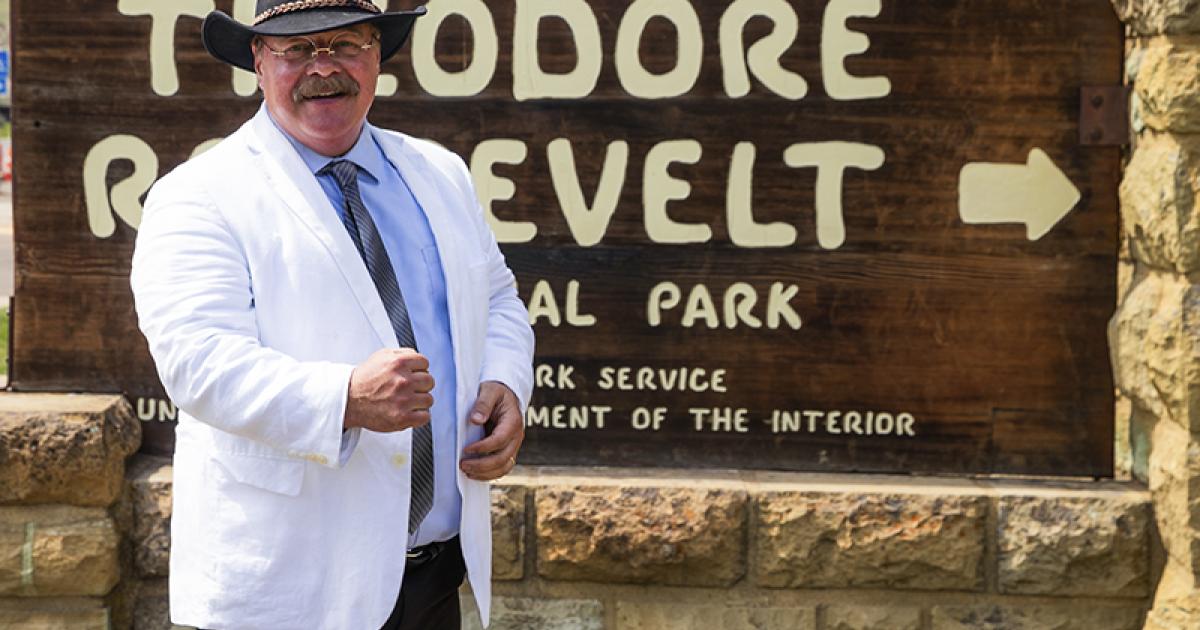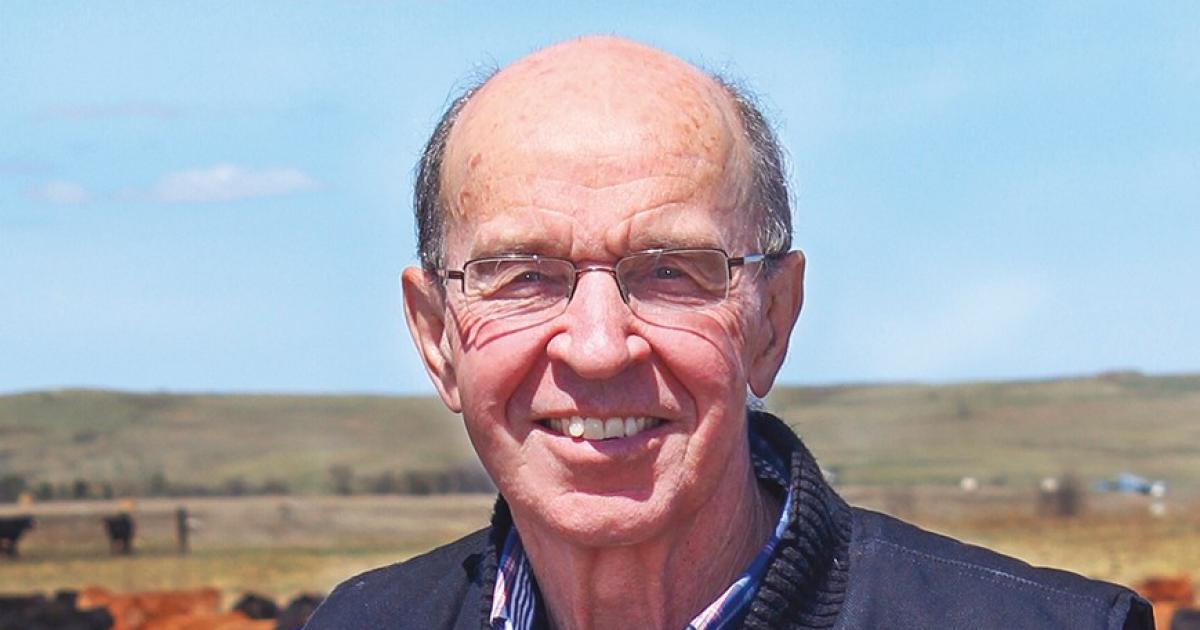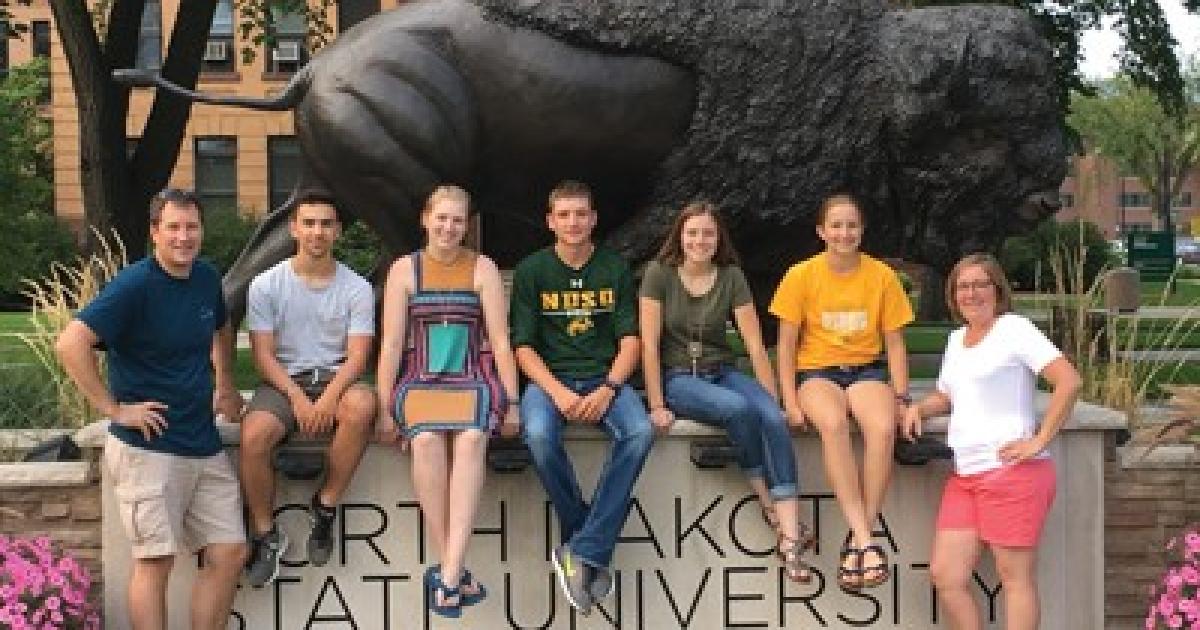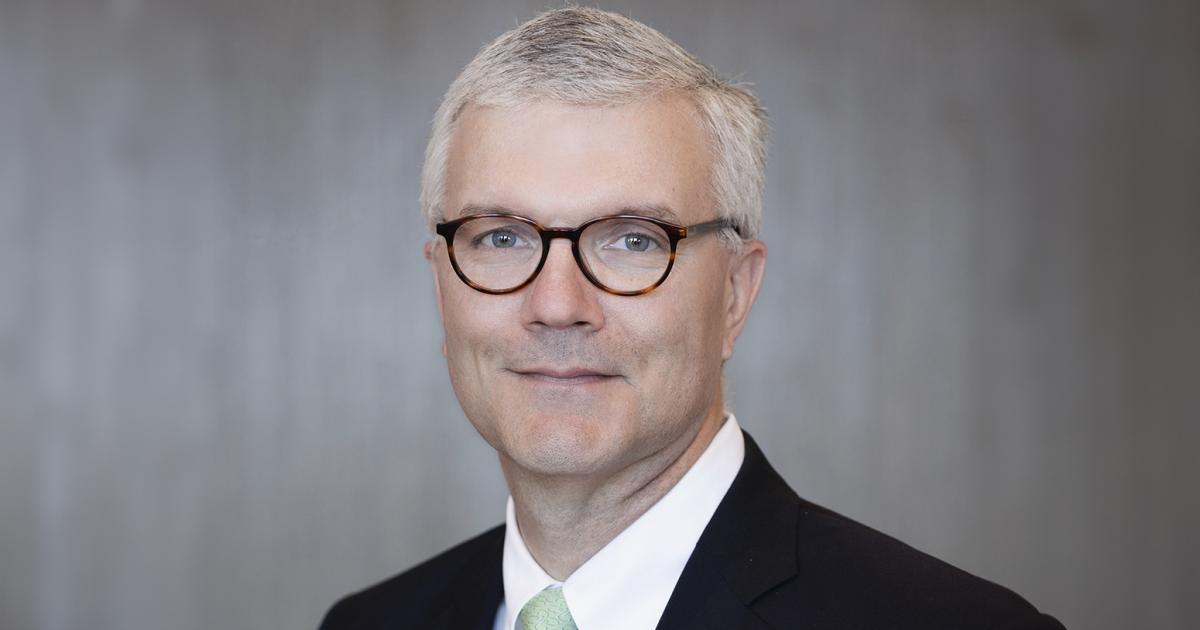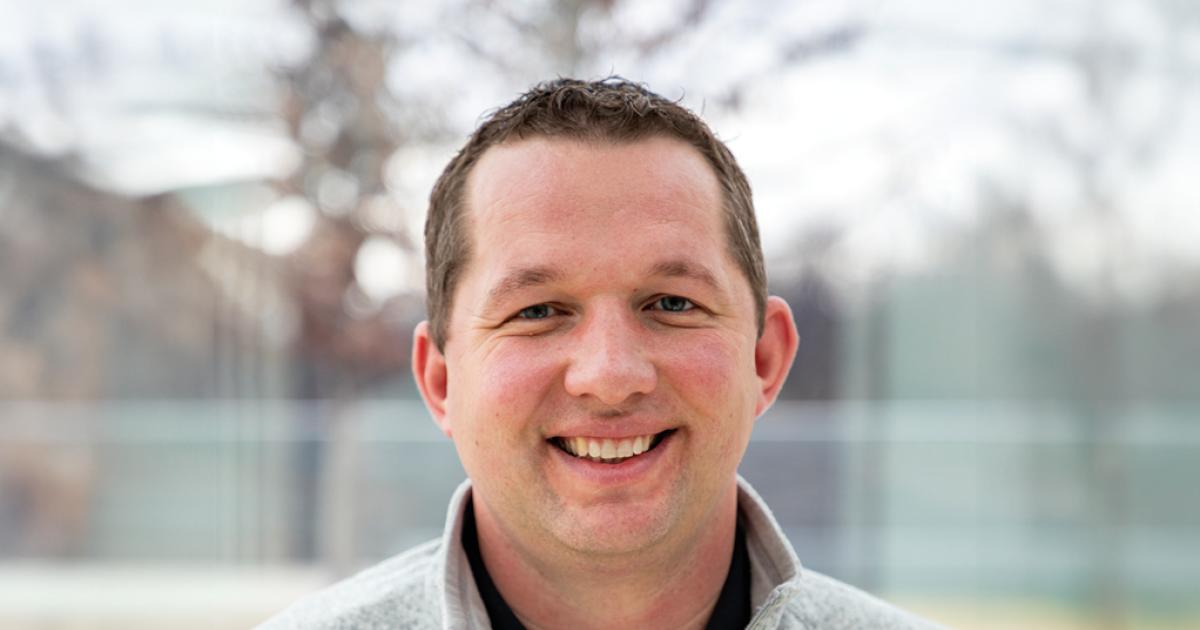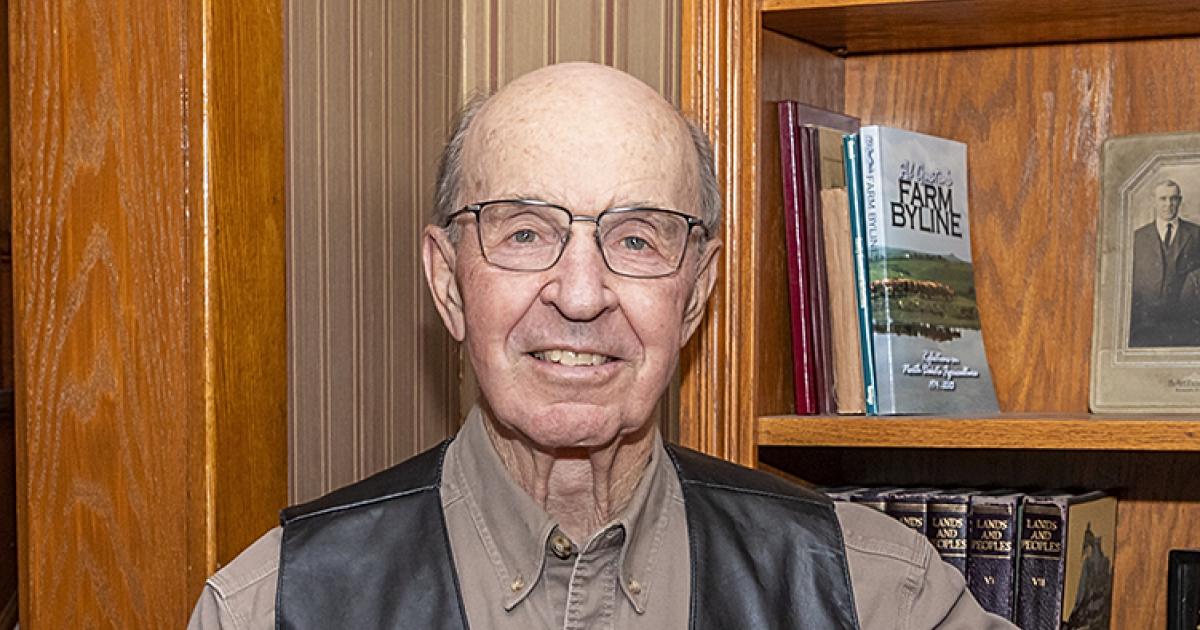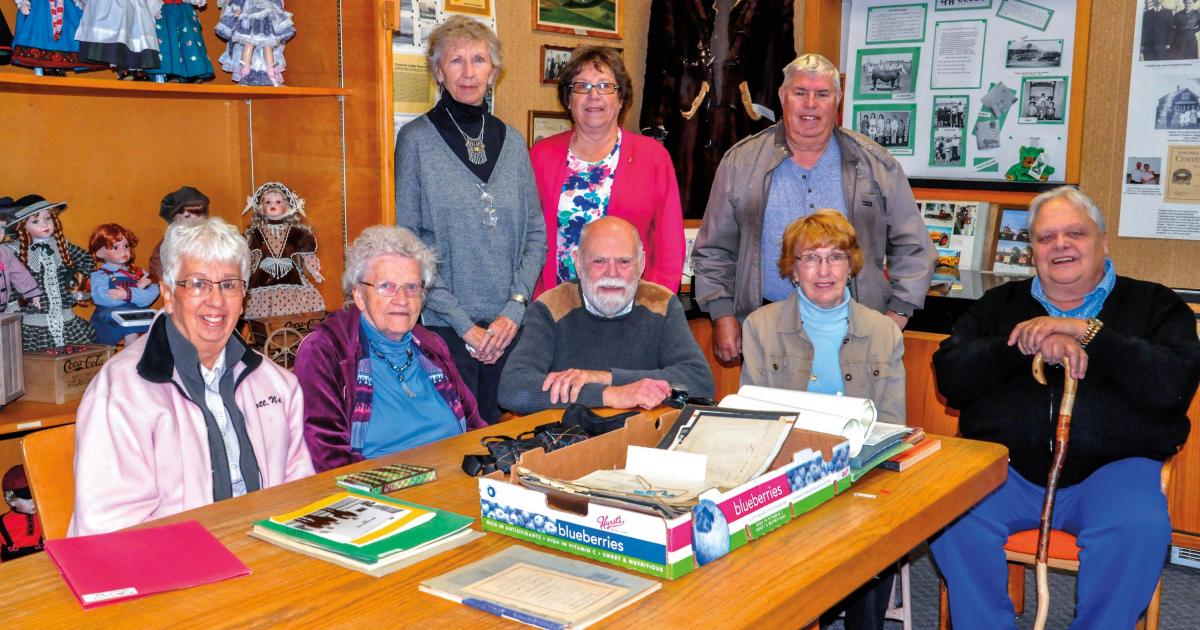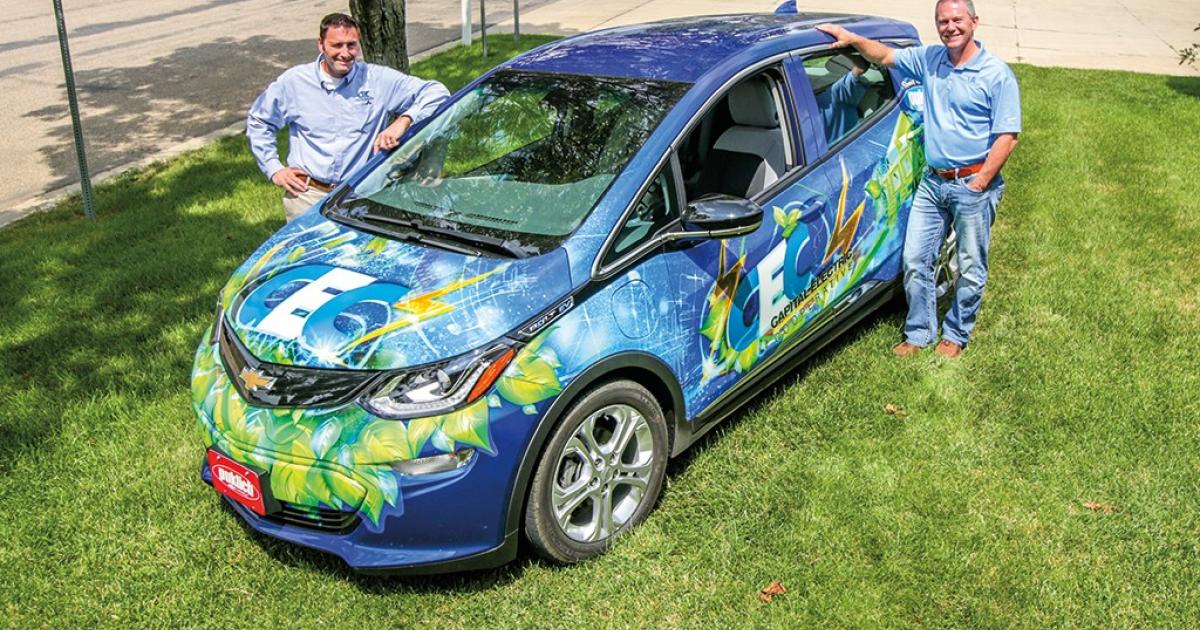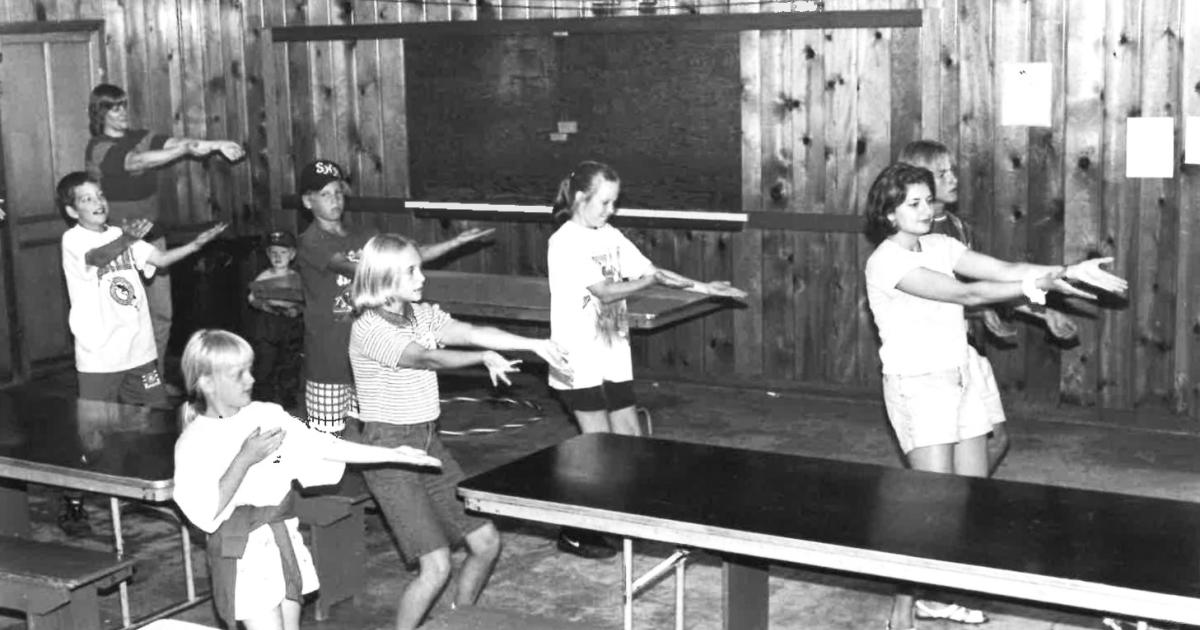This photo marks the end of phase one of the construction of the Theodore Roosevelt Presidential Library in Medora, which will open a year from now on America’s 250th birthday. The bright green exterior is insulation and will be covered. PHOTOS BY NDAREC/KENNEDY DELAP
“I’m a big believer that we need more talk about history, not less. This is how we do it,” says Robbie Lauf, executive director of the Theodore Roosevelt Presidential Library.
For the last 10 years, Lauf has thought about Theodore Roosevelt, his favorite president, every single day. He’s seen North Dakota’s presidential library transform from an idea to a $400 million sustainable marvel at the doorstep of the Badlands, where America’s 26th president transformed his life.
The project survived a move from Dickinson to Medora, secured $50 million from the state of North Dakota and a line of credit through the Bank of North Dakota, raised $286 million (and counting) through private donations and held a design competition during a worldwide pandemic.
Not to mention it required the passage of a literal act of Congress, the Theodore Roosevelt Presidential Library Act, which transferred 93 acres of public land to private ownership to build the library.
The Theodore Roosevelt Presidential Library will open one year from now on America’s 250th birthday, July 4, 2026.
“We’re going to open up on America’s 250th birthday and connect people to a president who’s loved by both the left and the right. There is nobody else that unites people to that level,” Lauf says. ”What you see in him says more about you than it says about him. You’ll find people finding agreement on issues they never thought they could agree on, just because they look at it through the lens of T.R.”
WHY NORTH DAKOTA?
Roosevelt was born into a life of privilege and affluency in New York City. But all the money in the world couldn’t have saved him as the Badlands did.
On Feb. 14, 1884, Roosevelt’s wife and mother both died. In his diary, he simply put an X on that date and the words, “The light has gone out of my life.”
He left his family and headed west, looking for trouble, Lauf says.
“He went as far west as the train could go and, lucky for us, it ended in Medora,” Lauf says. “He was pretty much ready to lose his life in the West and instead of losing his life, he was reborn by the outdoors and healed by the Badlands.”
Even on his deathbed looking back at his life, Roosevelt wished to relive his time as a ranchman in North Dakota.
Those experiences connect with people from all stations of life.
“That’s very easy for me to see how that would translate to other people,” Lauf says.
Interestingly, there have been two previous efforts to build a Theodore Roosevelt presidential library – both in New York, both failed.
Early in the North Dakota effort, the project got the endorsement of the Roosevelt family. Later on, the Roosevelt family funded the acquisition of the land from the federal government to build the library.
“They personally financed the purchase of it, very symbolically, to say that we not only endorse this, we’re all in for this,” Lauf says.
BUILDING THE LIBRARY
Constructing a library for America’s conservation president in the place he most treasured for its wildness may appear contradictory.
But the design ultimately selected for the Roosevelt library “looks to nature first,” says Craig Dykers, founding partner of New York and Oslo, Norway, based Snøhetta.
The design concept was to make the library part of the existing landscape, echoing the landforms of the surrounding Badlands, with sustainability a key feature.
Dykers calls it a “living library” that moves forward with future generations and is “placed within a thoughtful, authentic landscape, not a sea of parking.”
The main building is built into a bluff, framed at the top by a natural earthen roof, which visitors can ascend to enjoy views of Theodore Roosevelt National Park and Medora.
Phase one, constructing the exoskeleton of the building, was completed in May.
Crews are currently working on phase two of the project, the building’s interior and exhibits.
Inside, there will be galleries and artifacts that journey through Roosevelt’s life. Visitors will then be pushed outdoors for another element of the experience.
“We're the only presidential library in this country where you can hike, bike or ride a horse to,” Lauf says. “We’re at the entrance of Theodore Roosevelt National Park, which is the only national park in the entire system named after a person.”
As a new dad, Lauf hopes the Theodore Roosevelt Presidential Library experience inspires the next generation of leaders, conservationists, citizens and public servants.
“I want this to be a museum that children drag their parents to versus parents drag their kids to,” Lauf says. “This is all about everybody having a world-class educational experience, but first and foremost, this should be a transformative place for kids, so that they can connect to a positive influence in their lives.”
COMMUNITY PREPARATIONS
Creating a world-class institution that will draw thousands of visitors a year to a remote area of western North Dakota near Medora, a town of about 100 full-time residents with 700 hotel rooms, will require a tremendous amount of rural ingenuity.
Luckily, the library has a leg up through its partnership with the Theodore Roosevelt Medora Foundation (TRMF), which has built Medora, its musical and other attractions into a world-class destination.
Clarence Sitter is the CEO for TRMF and serves on the Medora city council. Local discussions have centered around infrastructure and the community’s future.
“There's a lot of conversations about what the future of Medora looks like, and how do we balance that with its past and the charm that people have come to love and enjoy. So, we want Medora to continue to have that authentic, genuine historical feel that everybody knows it for, but we have to continue to grow and evolve to accommodate the increased visitation,” Sitter says. “It’s been a really good collaborative effort between the county and the city and the local business community.”
Though impossible to predict how many visitors to expect for the grand opening, the library’s goal is 7,000 to 15,000 people for the ticketed experience. This will be spread over multiple days, as the museum can accommodate 2,000 visitors per day.
“The grand opening will be more than one day. It’s going to be a yearlong experience,” Lauf says.
That means Medora will be pushed further toward a year-round destination.
“I believe that Medora, even today, is more of a year-round destination than most people are aware of,” Sitter says. “We do shows in the fall, the winter and the spring. … With the presidential library, that’s going to only enhance the activities that we see in the non-summer months.”
Many infrastructure investments are being made to support the increased traffic in Medora.
Chateau Road, which takes visitors to the Medora Musical and the new library, will be widened with a bike lane and walking path added to accommodate future traffic flows.
TRMF also has three major infrastructure projects planned for 2026 completion. The first is a new 100-room hotel, the Presidential Lodge, which pays homage to Roosevelt. A wedding and corporate event barn with motel units and cabins will go up near the Bully Pulpit Golf Course. And a new rodeo arena with a 1,000-seat grandstand will celebrate Western heritage.
As in many rural communities, workforce is a top concern. TRMF has been successful in this area and leaned on for its expertise.
“Their innovation of using the visa programs to help with summer staffing and temporary staffing issues that now is kind of commonplace across the country, that was not commonplace when TRMF started that. They are a national leader in that,” Lauf says.
Lauf anticipates the library will employ 80 to 100 people, the vast majority based in Medora.
TRMF recruits 360 or more employees each summer.
“People are always one of the biggest things that can hold growth back,” Sitter says. “We have been able to continue to find the number of people that we need and the qualified people that we need, and I think that’s going to continue in the future.”
THRILLED BEYOND MEASURE
The public’s response to building the Theodore Roosevelt Presidential Library in North Dakota has been mixed, though Lauf says it’s increasingly positive as completion nears.
Some have expressed concerns about state funding being appropriated for the library. The Legislature removed an additional $50 million appropriation for the library during the 2025 legislative session.
Only 11% of the project is publicly funded.
“The size of the project is intimidating, and I think there’s honesty in saying they don’t want it to be publicly funded at all,” Lauf says. “But I say, find another museum in North Dakota that’s 11% publicly funded, and I’ll show you a museum that doesn’t exist.”
“Here’s my counterpoint: North Dakota and rural America deserves world-class experiences as much as Manhattan, as much as LA, because we deserve to have educational experiences for all of our kids that are on par with the best museums,” Lauf says.
Sitter sees the positives.
“I think this is going to be one of the iconic things in time that's for the state of North Dakota and for Medora, that really, looking forward, transforms tourism in our state and brings North Dakota to a whole new level in terms of recognition on a national scale,” Sitter says.
What would T.R. say?
“He would cut the ribbon and say, ‘Let’s get to work.’ He would want this to be a platform, not just a pilgrimage to the site,” Lauf says. “And I think he would be thrilled beyond measure that it was being built in North Dakota.”
___
Cally Peterson is editor of North Dakota Living. She can be reached at cpeterson@ndarec.com.
CO-OP POWERED
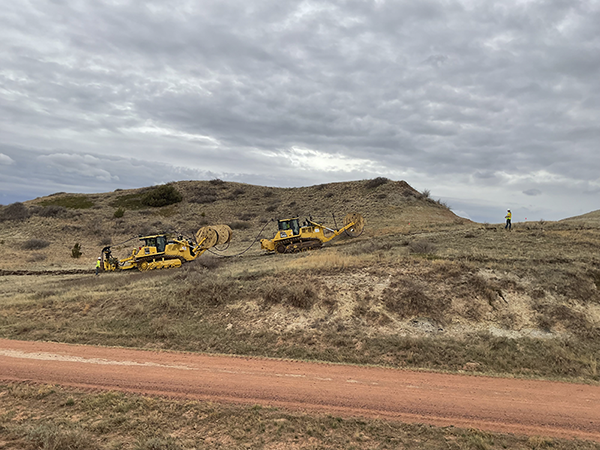
PHOTO COURTESY ROUGHRIDER ELECTRIC COOPERATIVE
The Theodore Roosevelt Presidential Library is powered by cooperative electricity.
Roughrider Electric Cooperative serves the area, including the town of Medora. The cooperative has seen electric demand growth with the addition of the library and other local projects, including a new 100-room hotel being built by the Theodore Roosevelt Medora Foundation (TRMF).
To meet the area’s growing energy needs, Roughrider Electric has upgraded the circuits from the Knutson substation 12 miles northwest of Medora. The co-op replaced 12 miles of aging, underground cable with new larger cable and removed overhead lines.
This upgrade will serve the library and accommodate future growth, while providing redundancy and improved reliability and safety for existing members.
“New infrastructure is much more reliable, which helps the general membership,” says Shawn Olson, Roughrider Electric operations manager and chief of staff. “And when growth keeps happening, then we have to build more transmission lines and more substations, which means you have more redundant feeds.”
The typography of the Badlands can present unique challenges for electric service.
“We have to do more underground boring because of the creeks and steep hills. It is tough,” Olson says.
But that didn’t slow Roughrider Electric’s progress. Thanks to the nice spring weather, the cooperative began plowing cable on March 18 and completed the project April 24.
“That is pretty amazing what our folks and our contractors were able to pull off,” Olson says. “We would like to thank the U.S. Forest Service, who were able to get permits and environmental concerns taken care of quickly, and we had private landowners that granted us easements to help with this process, including TRMF. Had we not all been working together, we would have never been able to get it done in that timeframe.”
“And, you know, the weather helped greatly. Sometimes, it’s better to be lucky than good,” Olson says.
The town of Medora has changed immensely over the years, even since Olson’s parents first brought him home to Medora as a newborn. His dad was a Theodore Roosevelt National Park employee.
But what hasn’t changed is the cooperative commitment to serving communities of all sizes, all the way to the member – or the presidential library – at the end of the line.
“North Dakota people are glass half full instead of empty people. There’s a will to make things work,” Olson says.


